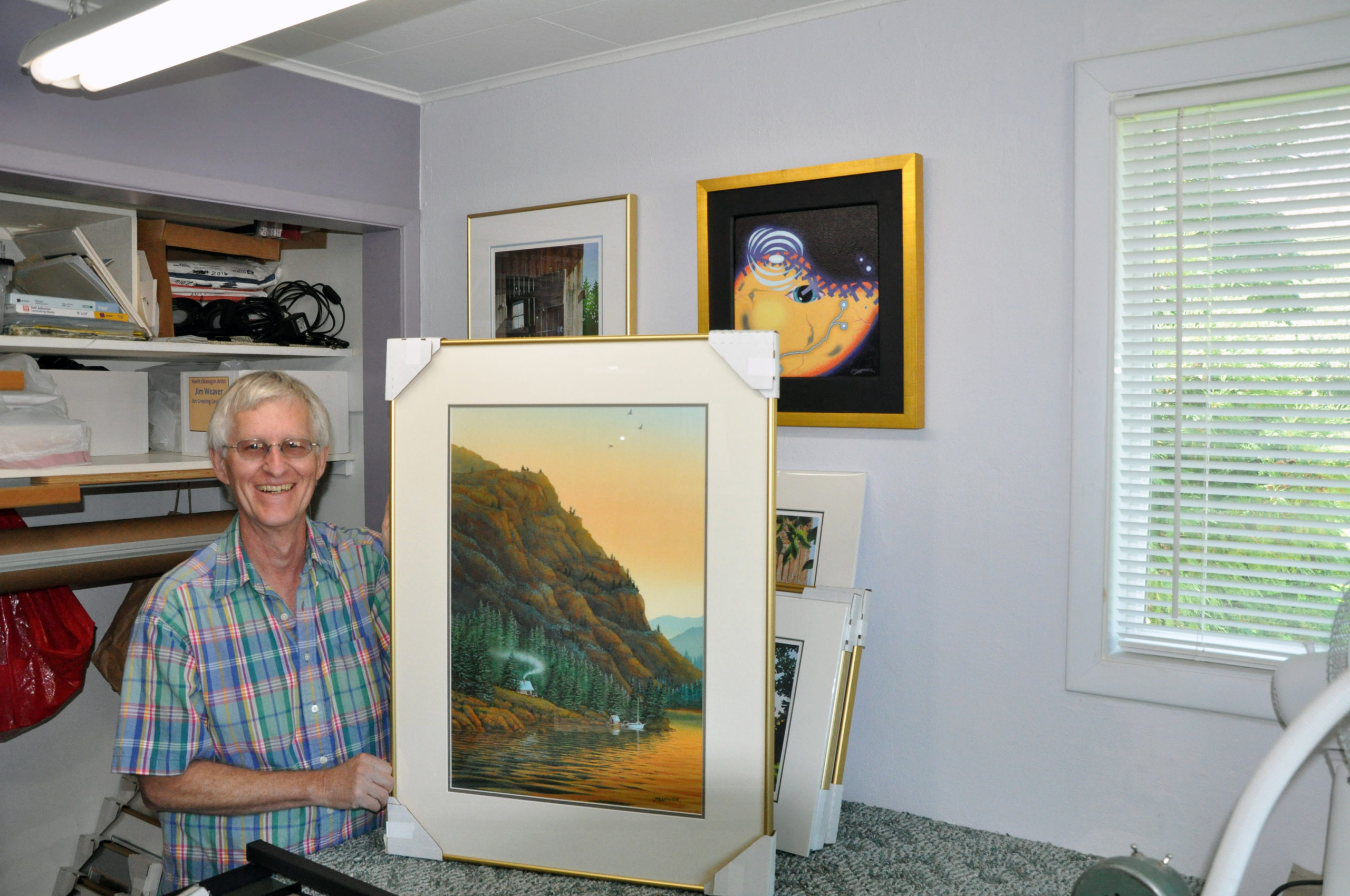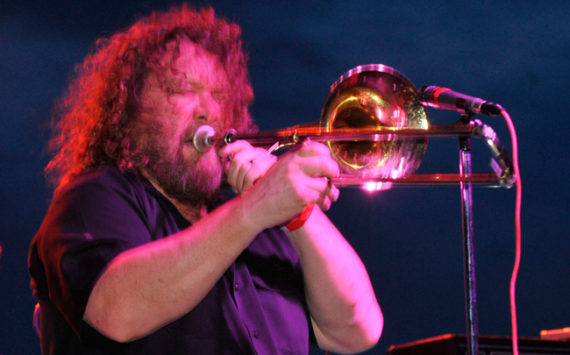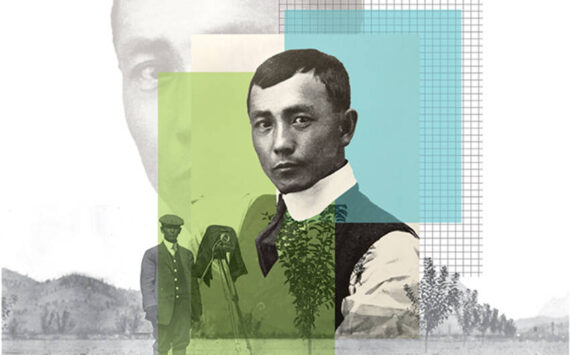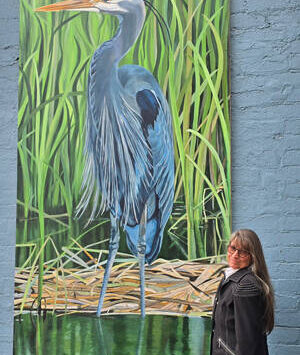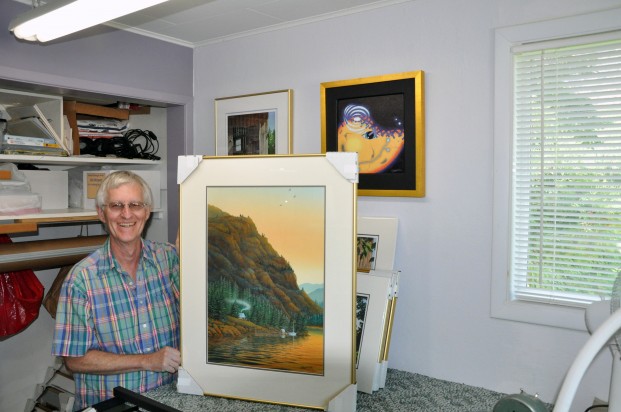
For a full three decades now, Jim Weaver has been one of the Okanogan’s most celebrated and well-loved artists.
Weaver’s representational watercolors appear regularly at galleries and art shows throughout the area. His depictions of bucolic rustic scenes and landscapes are infused by a love for the Okanogan that Weaver has called home for 30 years.
Weaver will be showing his new work, alongside classic favorites, at a solo art show at Esther Bricques Winery over Labor Day weekend. On the afternoons of Sunday the 3rd and Monday the 4th, art-lovers get the chance to explore a wide selection of Weaver’s oeuvre against the perfectly paired backdrop of Esther Bricques’s vineyards.
On display at the show will be half a dozen new paintings from Weaver’s Oroville studio. One of these is “Lakeside Retreat,” a favorite among Weaver’s following. The painting depicts a small cabin on the banks of a lake, nestled against the steep face of a rocky hillside plunging towards the water. Smoke lazes out from the cabin’s chimney while a hazy sunset reflects off the water.
“Lakeside Retreat” enchants the viewer in a difficult-to-pin-down way. Perhaps it’s Weaver’s subtle blending of colors in the sky, or the phenomenal way in which he depicts the gentle, lapping surface of the lake. One feels almost able to breathe in the crisp smell of an early autumn sunset, or dip a foot in the cool water. Or perhaps, especially to locals, it’s the painting’s je ne sais quoi sense of home and Okanogan comfort.
Weaver notes that more so than any of his other recent works, “Lakeside Retreat” immediately pulls viewers in, and leaves them asking question – the most common of course being, “Where is that?” Though it seems so achingly real, “Lakeside Retreat” was actually born largely in imagination and amalgamation. “It’s from an old sketch I did,” Weaver notes. “It started originally with just a quick outline of the gorge, which was from the Columbia Gorge on the way down to Portland, but it ended up looking more like Lake Chelan probably, something in this area.” From the sparse beginnings of a hillside outline, Weaver let his imagination guide his brush.
Weaver’s representational work fills the viewer with a sense not just of place and admiration, but also of memory and a close familiarity. Weaver’s paintings, even those which don’t strictly depict an actual location, seem to reflect the viewer’s memories in a curious way that goes beyond simple visual similarity to local landmarks. Perhaps it’s Weaver’s expertise with the medium. Watercolor paints, more so than oil or acrylic paints, have a wild, fluid quality to them. In many of his paintings, Weaver crafts his foreground subjects with meticulous and vivid realism, while the backgrounds breathe more fluidly, with Weaver allowing the pigment to swim its own course through wetted paper. The effect seems to reflect the peculiarities of memory itself – vivid, colorful subjects against a swirling, increasingly abstracting background.
Though best known locally for rustic representational work like “Lakeside Retreat,” Weaver has also been experimenting with more abstract explorations of emotion and experience. As with his representational work, this other side of Weaver’s oeuvre is rich with emotional resonance – though the emotional punch at times offers a more challenging viewing experience, diving into the difficulties and pains of the human experience. Among those who love Weaver’s representational paintings, these more abstract pieces tend to be polarizing; as Weaver notes, “People either love it or they hate it,” (personally, I love them).
One such painting that packs an emotional wallop is “Shadow of Despair.” Visually, the piece is deceptively simple – a blue-black face silhouetted against a sickly yellow background. Like watercolor pigment blooming into a wet canvas in unexpected ways, or like a complex wine blooming on your palette, the stark painting dives emotionally deeper the longer one takes it in. It vividly expresses a wrenching, hopeless pain, like (if you’ll pardon the blunt description) the last, wracking dry heaves of sickness, when there’s nothing left to come up but the body is still convulsing in uncontrollable pain; when visceral despair blots out everything else, like an eclipse blotting out the sun. The piece is at the same time challenging to look at and impossible to look away from.
Another of Weaver’s more abstract pieces which will be on display this weekend is “Future Tense.” The award-winning painting depicts faces mashing together, the central figure looking out in anxiety. For Weaver, “Future Tense” explores the sense of dislocation and crowded confusion building in the contemporary world. “I just thought about the direction the world’s going,” Weaver remarks. “We’re all getting closer, with friction between people… [there is] a sense of losing one’s place, or society taking off in a direction that perhaps you didn’t expect it to.”
Whether you go to enjoy Weaver’s idyllic representations of Okanogan life, or his abstract explorations of emotionality, this weekend’s show at Esther Bricques will be a do-not-miss event for lovers of art. The show will run from noon to 5pm, both Sunday, September 3rd and Monday, September 4th. Weaver’s art can also be viewed online at www.JimWeaverArt.com.
If you have an event or program that you’d like covered in this column, you can email Daniel at Daniel.Klayton@gmail.com.
